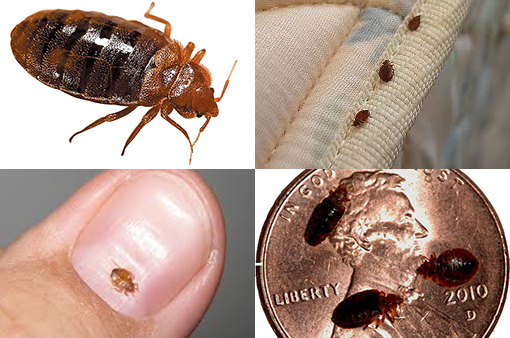Reliable A1 Bed Bug Treatment Houston - Remove Bed Vermin
Reliable A1 Bed Bug Treatment Houston - Remove Bed Vermin
Blog Article
Comprehending the Lifecycle of Insects for Targeted Control Techniques
Comprehending the lifecycle of insects is an essential element of effective pest management strategies. By understanding the numerous phases of development that insects undergo, a more targeted and precise strategy can be taken on to manage their populations. This knowledge not only clarifies the susceptabilities within the insect lifecycle but additionally leads the method for executing strategic measures that can interrupt their growth and recreation cycles. With a deeper understanding of just how bugs prosper and progress, tailored control approaches can be created to deal with details factors in their lifecycle, ultimately bring about even more successful bug administration outcomes.
Relevance of Recognizing Bug Lifecycle
Comprehending the lifecycle of bugs is vital for establishing effective and targeted control strategies in bug administration. By comprehending the numerous phases a pest undergoes from egg to adult, insect control experts can identify weak spots in the lifecycle where intervention can be most effective. Understanding when larvae are most energetic can aid determine the optimal timing for applying larvicides. Furthermore, recognizing the life-span of a parasite varieties can aid in predicting population growth patterns and prospective invasion dangers.
Furthermore, recognizing the specific environmental conditions necessary for each phase of the parasite's lifecycle can assist decisions on environment alteration or exemption approaches to lower and interfere with the lifecycle parasite populaces. This understanding enables pest management specialists to apply positive steps instead of counting exclusively on reactive therapies, resulting in more long-term and lasting bug control services. Inevitably, a thorough understanding of parasite lifecycles encourages bug control specialists to customize their methods efficiently, minimizing ecological impacts and taking full advantage of control results.
Trick Stages in Parasite Advancement
To successfully apply targeted control techniques in bug monitoring, an important facet hinges on comprehensively determining and understanding the crucial phases in pest development. Insect growth typically consists of several crucial phases that are essential for their lifecycle and administration. The initial phase is the egg phase, where parasites lay eggs that later on hatch into larvae. Larvae then progress right into pupae, a phase where they undertake transformation prior to becoming grown-up parasites. Understanding these stages is important as it assists in determining weak spots in the lifecycle where control actions can be most reliable.
Vulnerabilities in Pest Lifecycle
Throughout the various stages of a parasite's lifecycle, distinctive susceptabilities emerge that can be strategically targeted for effective control steps (A1 Bed bug exterminator houston LLC). One critical susceptability exists in the egg stage, where parasites are usually a lot more vulnerable to certain pesticides or biological control agents due to their soft external shell, making them easier targets for treatment. Comprehending these susceptabilities in the bug lifecycle is vital for developing reliable and precise control techniques that efficiently handle bug populations while lessening environmental influence.
Executing Targeted Control Steps

Implementing targeted control procedures generally entails a multi-faceted method. This might include environment modification to make the atmosphere much less congenial to parasites, such as eliminating standing water for insect control or sealing entrance factors for rodents. Furthermore, organic control methods can be used, where all-natural predators or microorganisms are presented to keep bug populaces in check.
Integrated Pest Management (IPM) strategies that incorporate numerous control procedures in a collaborated and sustainable manner are frequently the most effective in attaining lasting bug administration goals. By applying targeted control actions based on a complete understanding of bug lifecycles, insect populaces can be properly managed while reducing risks to human wellness and the atmosphere.
Enhanced Parasite Monitoring Practices

In addition, the incorporation of organic control representatives, such as natural predators or virus of bugs, can aid decrease reliance on chemical pesticides and advertise a much more balanced ecosystem. Carrying out physical obstacles and catches can also be part of improved parasite management practices, providing safe and targeted remedies for parasite control. Additionally, making click to investigate use of pheromones and other semiochemicals can interfere with pest breeding patterns and interaction, leading to decreased insect populations gradually.
Final Thought
To conclude, recognizing the lifecycle of parasites is essential for effective insect management approaches. By recognizing vital phases in parasite growth and susceptabilities in their lifecycle, targeted control actions can be applied to decrease parasite populaces. Improved insect administration practices can help reduce the reliance on broad-spectrum chemicals and advertise even more sustainable and eco-friendly insect control methods. This knowledge plays an essential duty in preserving healthy communities and agricultural performance.
Recognizing the lifecycle of insects is essential for establishing effective and targeted control approaches in insect monitoring. By comprehending the numerous stages a parasite goes with from egg to grownup, insect control specialists can determine vulnerable points in the lifecycle where treatment can be most successful. Ultimately, a detailed understanding of insect lifecycles equips pest control professionals to customize their techniques properly, reducing ecological impacts and making the most of control results.
By implementing targeted control procedures based on a thorough understanding of insect lifecycles, bug populaces can be effectively managed while lessening threats to human health and the environment.
By determining crucial phases in parasite development and vulnerabilities in their lifecycle, targeted control procedures can be applied to minimize insect populations.
Report this page